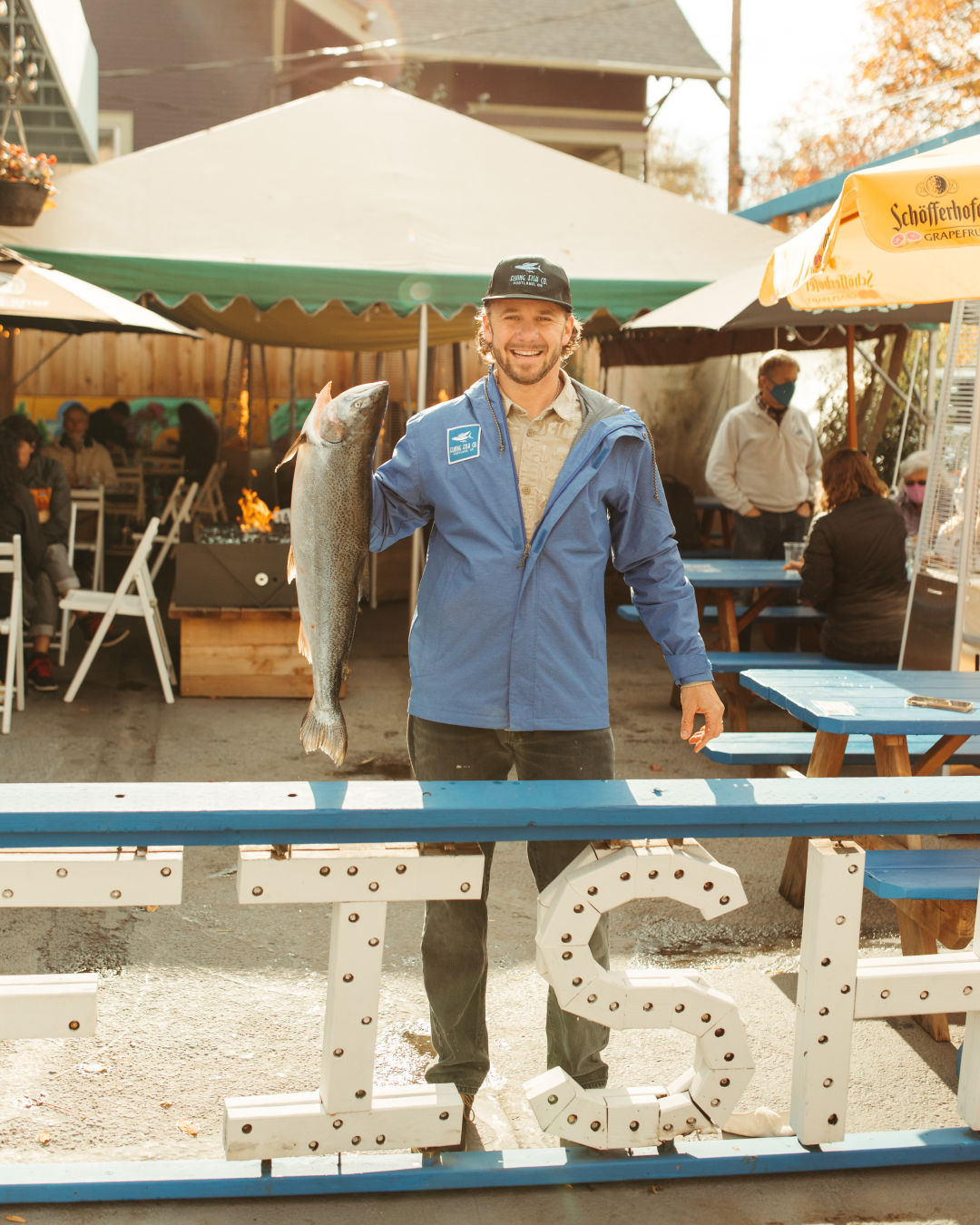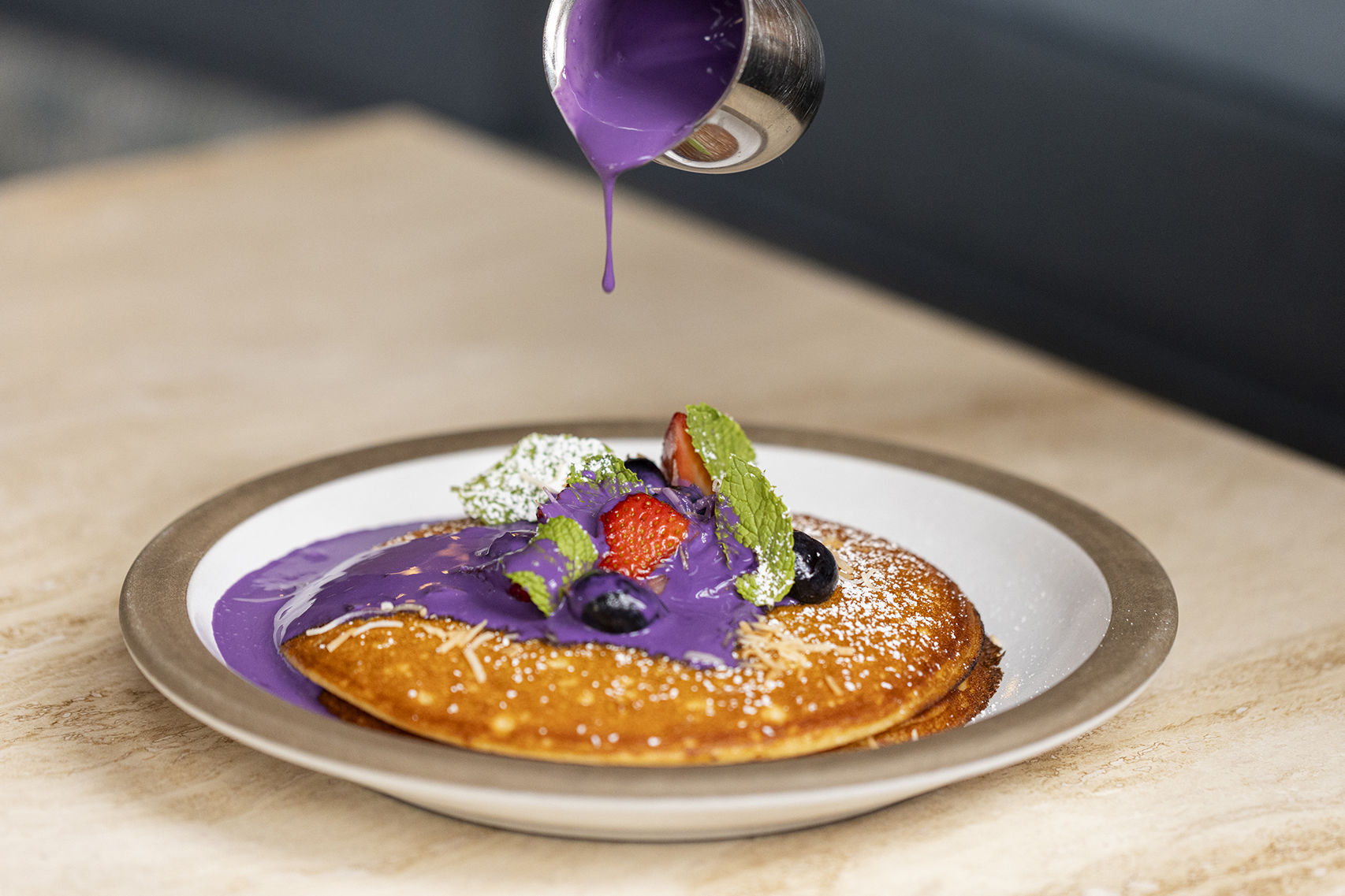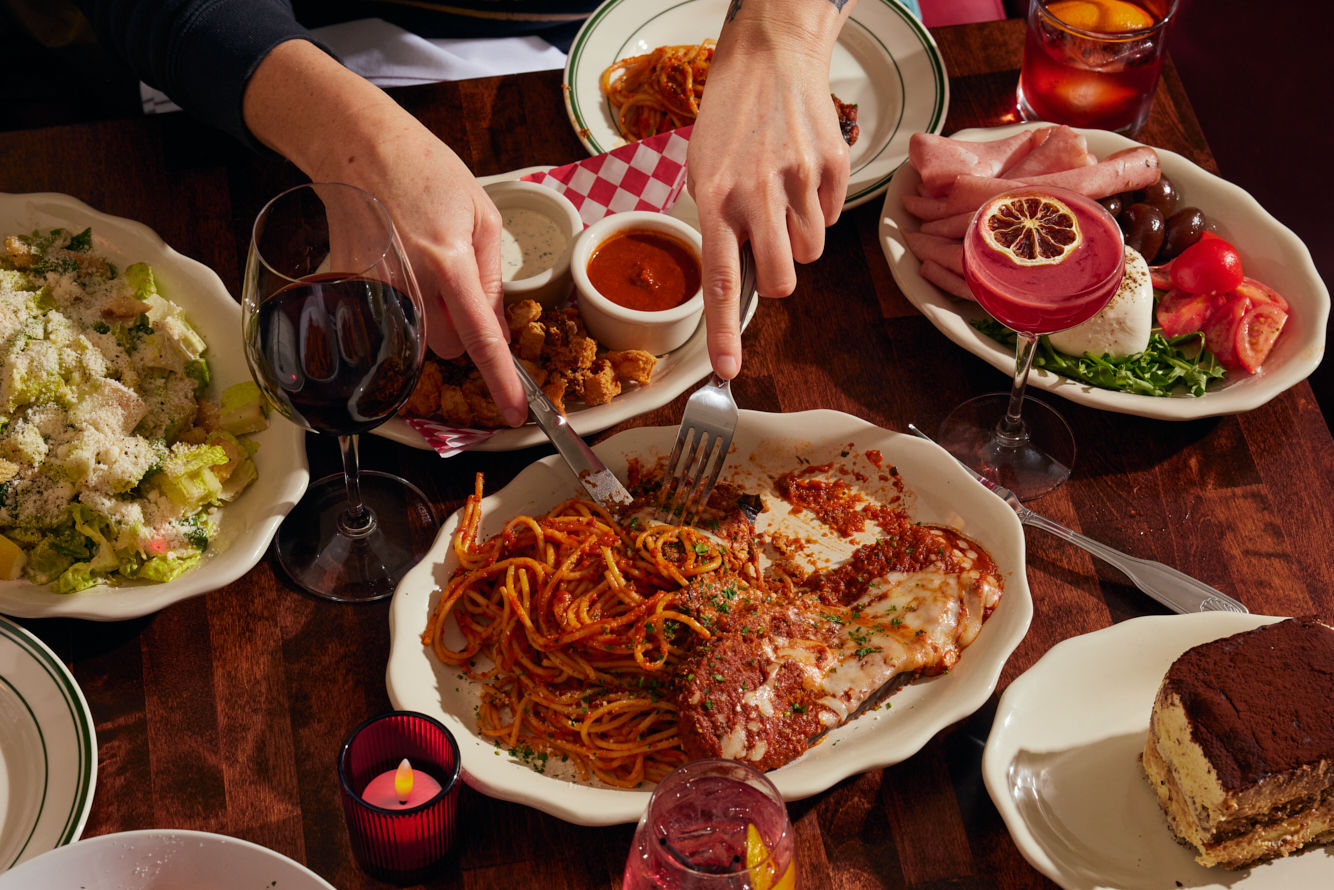Flying Fish Company’s Restaurant Turns 1

This bouillabaisse is made using local rockfish, clams, and mussels.
Image: Courtesy Flying Fish
It’s been a year since Flying Fish Company’s Lyf Gildersleeve opened his hybrid sustainable seafood market, oyster bar, and restaurant in the Laurelhurst neighborhood. But in his ten years as a fishmonger in Portland, this is perhaps the most change Gildersleeve has seen in a year.
Flying Fish’s first five years were spent in a little shack on SE Hawthorne and 23rd, followed by a four-year stint at Providore with a butcher counter, seafood counter, and raw bar serving oysters, poke, and ceviche. Then, in February 2020, Gildersleeve opened at his current location at 3004 East Burnside. The restaurant was inspired by the hybrid seafood market and fish and chips shop his family owned when he was growing up in the late 80s and early 90s, taking bits and pieces from seafood restaurants he admired up and down the West Coast and around the world.
The restaurant only got to operate with indoor service for a month before coronavirus shut down indoor dining, putting the focus entirely on the seafood market. At first, Gildersleeve noted, customers were thrifty, buying cheaper fish like $10-a-pound local rockfish; then, after a month or so, with restaurants still closed and and dining-out budgets unused, customers began to splurge on sushi-grade fish and ribeye steaks. Along with a variety of price points, Gildersleeve also offers wild seafood as well as sustainably farmed seafood from the Pacific Northwest and all over the world—farmed oysters from Oregon and Washington, farmed mussels from Washington, farmed littleneck clams from Massachusetts, wild rockfish from Oregon, wild tuna from Hawaii, farmed Ora King salmon from New Zealand, lobster from Portland, Maine, and wild Dungeness crab from Oregon. One message he wants to send to consumers: farm-raised fish can taste just as good as wild and be sustainable, too.
“The oceans have come to a maximum capacity of how much fish we can harvest from the oceans,” Gildersleeve says. “So with [our] growing world population, where's the rest of the fish going to come from? It's going to come from farm-raised fish. ... So we have to find ways to do aquaculture better ... whether it be clams or mussels or seaweed or fish, in a more sustainable way so that we can feed the planet.”

Gildersleeve holds up the catch of the day.
In June 2020, Gildersleeve converted part of the restaurant’s parking lot into a heated, covered outdoor patio and revamped the menu to include more lower-priced dishes and more takeout-friendly items. So far, Gildersleeve says, it’s been a success—especially with the addition of live music on Saturdays. Popular items include fish and chips, oysters on the half shell, a crispy cod sandwich, and lobster mac and cheese.
Next time you’re at Flying Fish (or any other local seafood market), try this bouillabaisse recipe—a hearty stew for winter weather, spiced with sambal and dried Thai chiles.
Flying Fish Bouillabaisse for Two
Veggies:
1 cup + 2 tbsp extra virgin olive oil
1 cup small-diced shallot
½ cup small-diced celery
¼ cup small-diced fennel
1 cup small diced Yukon gold potato
4 cloves garlic, thinly sliced
1 ½ cup baby bok choy, thinly sliced
1 tbsp minced ginger
Extra virgin olive oil
Kosher salt, plus more to taste
Wet ingredients:
2 oz Pernod
4 oz white wine
2 cups tomato water
2 cups fish stock
1 tsp colatura (Italian fish sauce)
1 tsp sambal
Dry ingredients:
2 bay leaves
4 dried Thai chiles
¼ tsp saffron
Seafood:
1 pound rockfish, diced
8 Manila clams
8 Savory clams
8 mussels
2 scallops, plus 1 tbsp butter or olive oil for searing
Garnish:
Parsley leaves, whole
Chives, cut into 2-inch batons
1 lemon, zested and halved
1. In an 8-quart stock pot, add enough olive oil to generously coat the bottom of the pan. Add vegetables and season with salt. When vegetables are slightly softened, add Pernod and white wine, and reduce by half.
2. Add remaining wet and dry ingredients. Bring to a simmer and cook until vegetables are tender. Taste and add salt if needed.
3. Add rockfish, clams, and mussels, and cook until shells open. Meanwhile, sear scallops on both sides in a sauté pan with butter or olive oil.
4. Divide soup into two large bowls. Garnish with a handful of whole parsley leaves, chive batons, a touch of lemon zest, and a squeeze of lemon juice. Top each bowl with a seared scallop.




